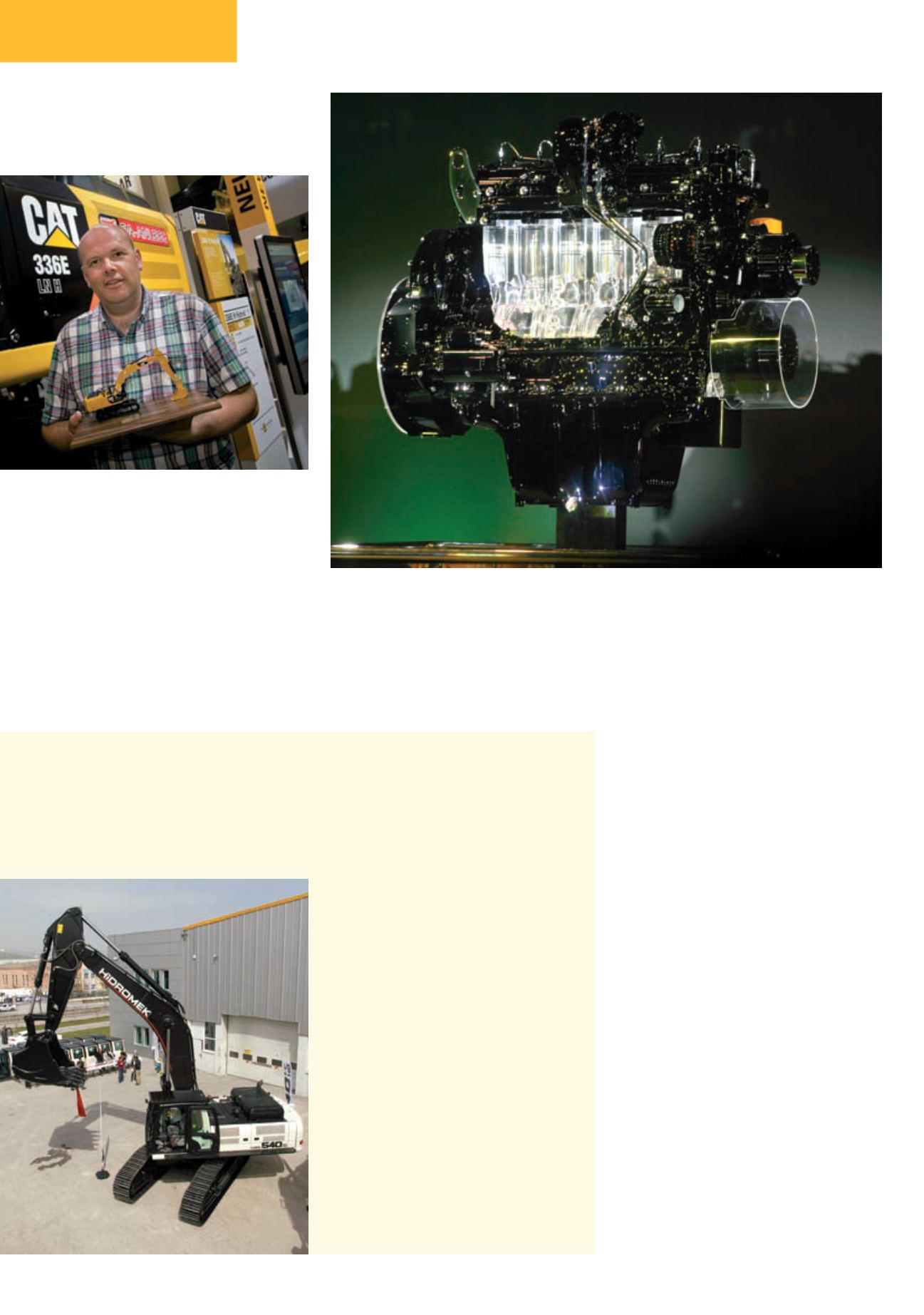
22
JULY-AUGUST 2013
d
&
ri
EXCAVATORS
New Hidromek 50
tonne heavyweight
Hidromek has added a prototype 53.2 tonne excavator to its offering, the HMK 540
LC HD. The machine has been designed to operate on demanding sites such as large-scale
construction projects and quarries.
Standard equipment includes a 3 m
3
(106 ft
3
) bucket with a breakout force
of 29,900 kgf (293 kN). The maximum
digging depth is 7.1 (23.3 ft) m and the
maximum digging reach is 11 m (36.1 ft)
at ground level. Components include an
Isuzu AH – 6UZ1X engine and Kawasaki
hydraulic pump that offers an automatic
boost function, resulting in increased
lifting capabilities, lower cycle times and
higher breakout forces.
The cab is Hydromek’s Gen Series,
which is pressurised to prevent the
ingress of dust and dirt. A rear-facing
camera is standard and other features
include Opera Control System, a fully
automatic climate control system, a USB
port to play music, cool box and storage
compartments for personal items. The
new addition means Hidromek’s excavator
range now spans the 14 to 54 tonne
classes.
to weigh-up is how quickly buying such a
machine will pay-off. Yes, fuel consumption
is lower, but the extra on-board technology
inevitably means a higher purchase price.
This balance is something manufacturers
are highlighting. For example, speaking at
Bauma, Volvo Construction Equipment
president Pat Olney said any machine the
company produced would have to provide a
strong business case for its customers.
“Our focus is on fuel efficiency and
viability for the customer. We continue
to research hybrids and we have a lot of
experience in the group through Volvo Bus,”
said Mr Olney.
He added, “When we bring something to
the market, we want to make sure it is viable
for our customers. We think we have some
good ideas, but we’re not ready to talk about
them yet.”
The company exhibited a prototype hybrid
wheeled loader at the 2008 ConExpo-Con/
Agg exhibition, using an electric motor
alongside a traditional diesel. However, it
did not go on to put the machine into full
production.
HYDRAULIC ‘HYBRIDS’
This question of costs and benefits to the
customer is what prompted Caterpillar to go
down a different route in developing what it
describes as a hybrid. Although the dictionary
definition of ‘hybrid’ would imply a machine
with a combination of energy systems
on-board, Caterpillar takes a broader view
and defines its hybrids as anything that can
recover waste energy.
The company’s 336E H is a 36 tonne class
excavator featuring a hydraulic accumulator
to capture waste energy. But as Caterpillar
global product manager for large excavators
Ken Gray explained, there were other
departures from traditional excavator design
on the machine to cut fuel consumption.
“We have historically designed excavators
around a hydraulic pump speed. We have
designed this machine around a 1,500
rpm engine speed, which is the lowest fuel
consumption point. You compensate for
that with a larger displacement pump to get
all the hydraulic power you need, and you
electronically control that to make sure you
don’t lose performance and response."
“Then we have the ACS adaptive control
valve, which is there to optimise the flow
that is available. We need to put hydraulic oil
where we need it, when we need it in exactly
JCB recently launched the new Ecomax 672 diesel
engine for its JS330 and JS360 excavators – the first
6 cylinder diesel it has ever produced. Initially it will
only be available for developing markets
Sten Antonsen, owner of Norwegian contractor
SA-Anlegg took delivery of Caterpillar’s first 336E
H excavator. The order was placed just two days
after the machine’s launch announcement in October
last year, months before it would be commercially
available
>
25


